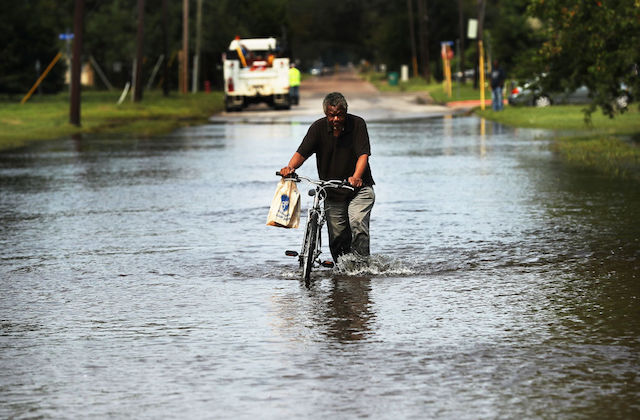In 2017, Hurricane Harvey hit Houston, doing billions of dollars in damage to the Texas city. Not only was there loss of lives and homes, but the storm caused serious environmental damage. And now, nearly two years later, the United States Congress has launched an investigation into the federal government’s failure to fully assess the the resulting air pollution.
Yesterday (March 6), members of the House Committee on Science, Space and Technology sent letters to the United States Environmental Protection Agency (EPA), Texas Commission on Environmental Quality and NASA requesting documents to determine why the government agencies declined an offer from NASA to monitor air quality over Houston after Hurricane Harvey.
As Houston Chronicle reported:
rnt
Harvey knocked down smokestacks, damaged pipelines, broke chemical storage tanks and flooded hazardous waste sites, causing poisonous runoff to spill into nearby streams. All hands were needed to assess the 2017 storm’s environmental impact and figure out what immediate steps should be taken to protect the public. Yet when NASA extended its hand, it was refused.
NASA has a flying chemistry lab that the Chronicle reports can fly as low as 500 feet above ground and as high as 40,000 feet. Since 2016, it has been used to take dozens of scientists on global missions to test airborne gases and particles. Says the newspaper, “The lab has the ability to analyze more than 450 types of air pollutant compounds, compared with the 24 compounds EPA’s single-prop air pollution plane can analyze.”
The Congressional investigation was prompted by an article published Tuesday (March 5) in the Los Angeles Times on NASA’s offer being declined. The Times said the government agencies turned down assistance because they were concerned about “confusion” or data that could “overlap” with their own.
“Instead of gathering the most accurate air quality data possible, state and federal officials apparently decided they would rather not know about potential toxic chemical releases,” the House committee members wrote in its letter. “If this is true, it is not only an embarrassment, it is unacceptable.”
Last year, the Houston Chronicle and The Associated Press conducted an investigative report to determine how environmentally damaging Harvey was. The news outlets concluded it “was much bigger than authorities reported,” stated the Chronicle, adding:
rnt
Benzene, vinyl chloride, butadiene and other known human carcinogens were among the dozens of tons of industrial chemicals released throughout Houston’s petrochemical corridor and surrounding neighborhoods and waterways following Harvey’s torrential rains.
Hurricane Harvey hit Houston in August 2017 and dumped more than four feet of water on the region. Sixty-five people died as a result and damage is estimated at $120 billion. One year later, thousands of city residents remained in temporary housing.
Houston is the nation’s fourth-largest city, and its residents are 22.8 percent Black and 43.8 percent Latinx. Communities of color were particularly hard hit during the storm. As Colorlines previously reported, “They are often in low-lying areas that are vulnerable to flooding and, per The Atlantic, ‘near petrochemical plants of superfund sites that can overflow during the storm.’”
Elena Craft, senior director of health and climate at Environmental Defense Fund, told the LA Times, “EPA and the Texas Commission on Environmental Quality knew air pollution was one of the unseen dangers of Hurricane Harvey, but chose not to use every available tool to discover it.”
